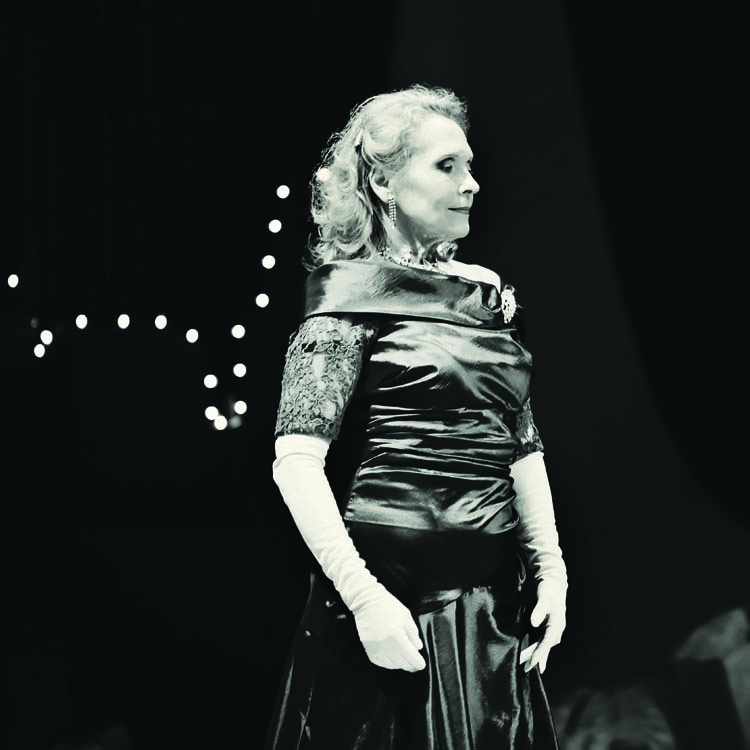The first toe-stomping steps my husband and I took to try to learn to dance together were not promising. Silently, I criticized his sweaty palms and his trouble keeping count, imagining myself a perfect partner gliding elegantly across the parquet.
A litany began in my head, wondering if I needed a different partner.
Breaking my reverie, our dance instructor scolded me (with a chuckle): “Let him lead.”
Perhaps I wasn’t perfect after all. Clearly, though, we were out of sync on the dance floor — what did that say about our relationship?
 Many months of lessons later, after we’d switched from sweats and sneakers to heels and dress shoes, we found our rhythm. I learned to let him lead (and like it!) and we found the hour of music-induced movement an island in a busy week, a chance to notice each other and gaze eye to eye — forgetting about kids, work deadlines, and to-do lists. We fell in love with each other all over again, and it happens every time we step on the dance floor.
Many months of lessons later, after we’d switched from sweats and sneakers to heels and dress shoes, we found our rhythm. I learned to let him lead (and like it!) and we found the hour of music-induced movement an island in a busy week, a chance to notice each other and gaze eye to eye — forgetting about kids, work deadlines, and to-do lists. We fell in love with each other all over again, and it happens every time we step on the dance floor.
Ballroom dance is not only a great way for couples to connect, but it’s also an incredible workout (core strength!), a great way to make friends, and an unexpected place to find community. Partly prompted by popular TV shows like Dancing with the Stars and So You Think You Can Dance, the ballroom dance industry saw a 35 percent increase in the number of people taking lessons between 2001 and 2011, according to research firm IBISWorld, and it has continued to grow every year.
Locally, there are many places to learn to dance, including Fred Astaire Dance Studio, Dance Elite Ballroom Studio, and Arthur Murray. Students often come for one reason (a child’s wedding, a desire to lose weight) and stay for another (newfound camaraderie, a sense of belonging, an unexpected love of performing). Some end up entering in local “Team Match” competitions — or even nationally.
There are many benefits to ballroom dance. Stanford University researchers confirm that it can help prevent Alzheimer’s and dementia. And other studies show regular dancing reduces depression, builds confidence, and helps with weight loss.
 “I just love it,” says Patti Brozek, a 43-year-old Bloomfield Hills mother of two. “When I am dancing, I am not a mother, I am not a wife, I am not an employee. I am just me.”
“I just love it,” says Patti Brozek, a 43-year-old Bloomfield Hills mother of two. “When I am dancing, I am not a mother, I am not a wife, I am not an employee. I am just me.”
Brozek started dancing after a colleague whisked her on the dance floor at a work party and flipped her over. “I said, ‘Ohmigod, do that again!’ ” The friend encouraged her to sign up for lessons and after doing so at Fred Astaire Dance Studio in Bloomfield Hills, she “was hooked.”
Aside from the fun of it, and the thrill of performing, ballroom dance has taught Brozek myriad lessons, not the least of which is how crucial it is for busy people to make time for themselves.
“I’ve learned patience,” Brozek says. “Doing something fun and finding time to do it is so important. Try to find someone who’s not smiling when they dance — you can’t! It’s pure fun.”
Susie Sills and Michael Levey feel the same way. The 50-something husband and wife from Bloomfield Township, with six kids between the ages of 22 and 32, started dancing the Argentine tango as an anniversary gift. For the past few years, they’ve averaged a couple weekly lessons together, and several more individually, at Fred Astaire.
A longtime exercise devotee, Sills admits the physical workout is incredible — but it’s the mental workout she really appreciates. Also, she’s gained powerful insights into how she presents herself to the public.
“I’ve learned about talents or strengths that I should be using,” says Sills. “It has given me a lot of introspection. I’ve done a lot of learning about myself. It beats going to the gym or getting on a piece of equipment — and it’s fabulous fun.”
 Dance, says Sills, is “a conversation — certainly with your partner and also with an audience. The level of self-confidence and being clear in your communication that you have on the dance floor can translate into all different aspects of your life.”
Dance, says Sills, is “a conversation — certainly with your partner and also with an audience. The level of self-confidence and being clear in your communication that you have on the dance floor can translate into all different aspects of your life.”
After an 8- to 10-hour workday, Levey loves to dance. “It reinvigorates me,” he says. “It’s using a different part of my brain and I’m actually sore and exhausted after an hour and a half of dancing — it’s extremely strenuous.”
Pradeep Kokate, 58, of Oxford takes private lessons and attends dance parties at Fred Astaire. He’s enjoying the benefits of improved fitness and agility. “It has definitely improved my self-confidence by having to lead partners with varying skills,” he says.
Dance is almost like a game of chess, where you’re always having to think ahead to the next few steps.
“The brain and the body have to work together,” Kokate says.
Levey loves the camaraderie and the teachers, and he’s learned about the metaphorical dance between couples: what a man needs to do to lead a strong woman, how to multitask the rhythm and music, step after step, guiding his partner so she looks exquisite. So much effort helps to make it look easy.
 For a power couple, ballroom dance brings them into alignment — she gives a little, he gets stronger, the bickering over the beat subsides, and they find each other in fun. “I love it,” says Levey. “I look forward to it all the time.”
For a power couple, ballroom dance brings them into alignment — she gives a little, he gets stronger, the bickering over the beat subsides, and they find each other in fun. “I love it,” says Levey. “I look forward to it all the time.”
For couples, ballroom can be a perfect formula to learn the art of dancing through life as partners. The famed Brigham Young University Ballroom Dance Company Artistic Director Lee Wakefield once said, “If the man is too possessive or pushy or protective, the lady won’t be able to do her part. The man can smother the woman or she can end up having to do too much in the relationship.”
On the dance floor, then, the fox trot, rumba, or the elegant waltz can teach a couple exactly how to move together, when to pause, and when to continue their careful orchestrations, step by step, beat by beat.
|
|
|











